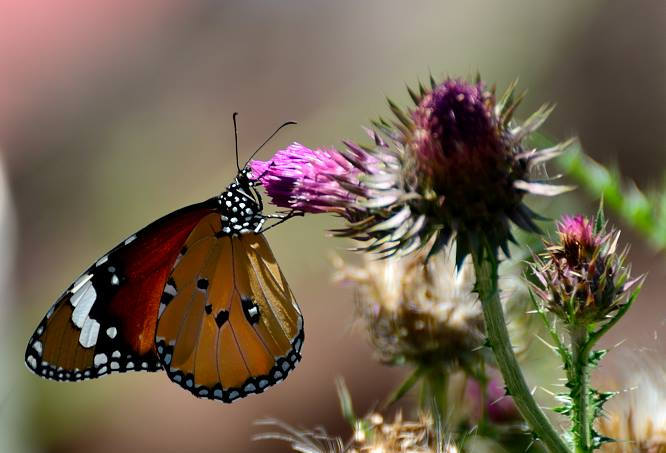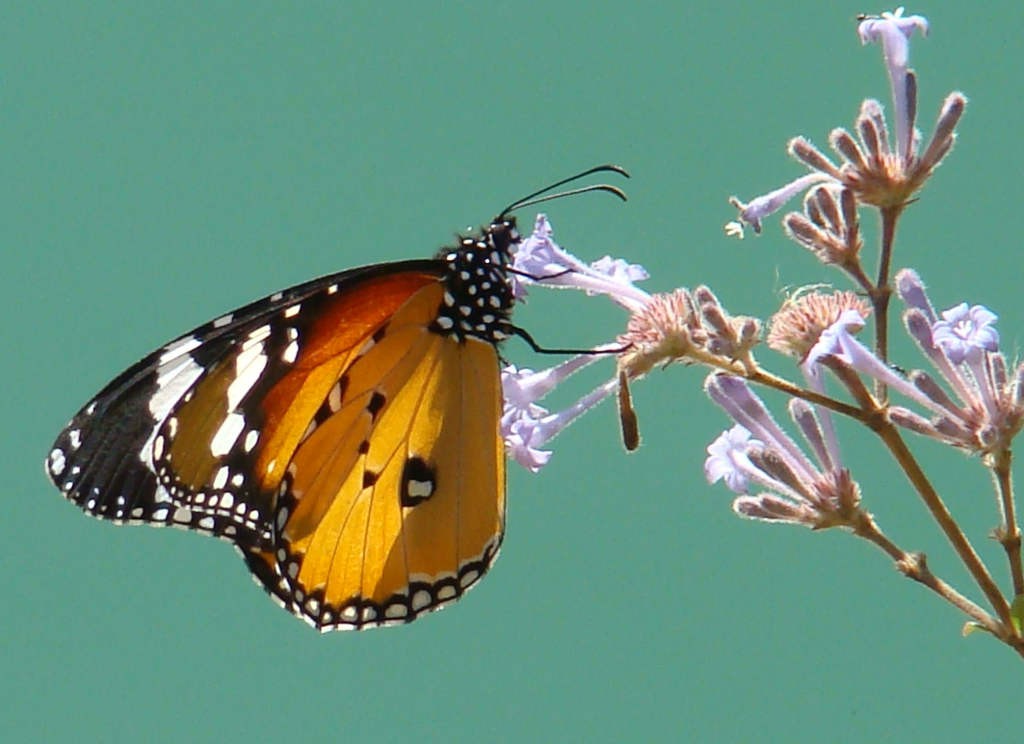
Danaus chrysippus (Plain tiger)
The Plain Tiger (Danaus chrysippus) is one of the most recognizable butterflies found in the Great Himalayan National Park (GHNP). With its bright orange wings bordered with black and speckled with white, the Plain Tiger is not only a delight to observe but also an important part of the park’s pollinator community.
Appearance and Identification
The Plain Tiger has a striking appearance. Its orange wings are bordered by black margins, which are dotted with small white spots. The hindwings are similarly orange with subtle black edging. Males can be distinguished by the presence of a specialized scent gland on each hindwing, used during courtship.
Habitat and Distribution in GHNP
In GHNP, Danaus chrysippus is typically seen in lower elevations, especially in open grasslands, scrublands, and along forest trails. It thrives in sunlit clearings and is commonly spotted fluttering around flowering plants from early spring to late autumn. These butterflies are hardy migrants and can be observed throughout much of India, including the lower stretches of GHNP.
| Common Name | Plain Tiger |
| Scientific name | Danaus chrysippus |
| Family | Danaidae |
| Description | It is one of the commonest butterflies seen Great Himalayan National Park. In case of this, male is smaller than the female and has a scented pouch in the centre of the hindwings. Birds generally avoid his evil tasting butterfly due to the fact it imbibes unpalatable alkaloids from its host plants. At first the caterpillar is yellowish in colour and having black bands. |
Ecological Role
The Plain Tiger butterfly plays a key role in pollinating wildflowers and helps sustain the park’s floral biodiversity. As a part of the Danaidae family (also known as Milkweed butterflies), it also exhibits a defense mechanism where it stores toxins from host plants, making it unpalatable to predators.
Breeding and Life Cycle
The larvae feed primarily on milkweed plants, which provide them with chemical defenses. The life cycle includes four stages: egg, caterpillar, pupa, and adult. The butterfly’s ability to breed multiple times per year contributes to its widespread presence.
Conservation Significance
While the Plain Tiger is not currently threatened, its presence in the Great Himalayan National Park is a positive sign of healthy ecosystems. Butterflies like this serve as bioindicators, and changes in their population can reflect environmental changes within GHNP.
Conclusion
The Plain Tiger (Danaus chrysippus) stands out for its beauty and ecological importance in GHNP. As both a pollinator and an indicator of environmental health, it highlights the value of protecting even the most common species in the rich biodiversity web of the Himalayas.




